Though gardeners tend to overlook it, Epsom salt (Magnesium sulfate) is one of the vital compounds for plant health. It can boost nutrient absorption, increase the seed-germination rate, and encourage strong development among certain plants. The goal of this blog post is to identify plants that benefit most from Epsom salt by explaining why it works and providing guidelines for its use. Effective use of Epsom salt leads to healthier plants with higher yields and vibrant foliage, which makes it a valuable resource for new as well as experienced gardeners.
Benefits of Epsom Salt for Vegetable and Fruit Plants

Epsom salt, which is rich in magnesium, helps to improve chlorophyll production while necessary for converting the sunlight into energy through photosynthesis. Magnesium sulfate also prevents magnesium deficiency that causes ill health of fruits, causing low fruit set and yield in vegetable plants like tomatoes and peppers. Moreover, the use of Epsom salt on fruiting plants like raspberries or strawberries can result in better tasting and bigger fruit. Additionally, magnesium acts by enhancing absorption of key nutrients such as nitrogen and phosphorus among others which are vital for overall plant growth and productivity improvement. For best outcome, a typical recommendation is one tablespoon of Epsom salt dissolved in a gallon of water delivered either as foliar spray or as soil drench every two to four weeks.
The role played by Epsom Salt towards Tomato and Pepper Growth
The effectiveness of Epsom salt in boosting the growth of tomato and pepper has been attributed to its high content of magnesium. This essential element forms chlorophylls used for photosynthesis. Its presence is directly related to the ability of a plant to derive its food from sunlight hence making it an important atom within a molecule of chlorophyll. In this case, tomatoes plus peppers commonly show signs that indicate low quantities of magnesium such as yellow leaves between their veins while the leaf edges remain green which is known as interveinal chlorosis.
To solve this issue, one can apply Epsom salts at about one tablespoon per gallon of water concentration so that there will be enough supplies throughout the growing period despite any changes in weather conditions or seasons. This dosage has been supported by horticultural recommendations and scientific literature showing how right concentration can lead to higher crop vigor with more yields being harvested at the end. The solution could either be applied onto leaves’ surfaces using foliar spray where it easily enters through them or poured straight down into the ground if you want roots to take up something. During the period of peak growth, it is recommended to spray every two weeks for proper absorption and action. Soil application should be done at four to six weeks interval so as to keep the nutrient balance without causing salt build-up.
In addition to providing magnesium, Epsom salt also delivers essential sulfur, which is a component of vital enzymes and protein synthesis in plants. Hence, these dual nutrients enhance cellular activities, leading to more resistant and productive tomato and pepper plants.
Epsom Salt for Boosting Leafy Greens
Leafy greens can benefit immensely from Epsom salt by providing the required magnesium and sulfur. Magnesium is important for chlorophyll that makes leaves healthy during leaf development if photosynthesis is to take place. Dissolve one tablespoonful of epsom salts in every gallon of water then apply either as a foliar spray or drenching on soil while used in farming. The best frequency for foliar spraying with this solution is once every two weeks whereas the intervals when treating soil are between four and six weeks. This program enables adequate nutrient provision without leading to salt accumulation hence making leafy green vegetables grow vigorously with lush foliage.
How to improve root vegetables through Epsom salt
Epsom salts can be helpful for root crops like carrots, beets and radishes due to their ability to boost root development and nutrient uptake. Magnesium is important in the making of cell walls and general metabolism in plants by facilitating conversion of light into energy through photosynthesis. Further sulfur from Epsom salts helps create vitamins and amino acids which make roots tougher and richer in nutrients. Dissolve one tablespoon of Epsom salt per gallon of water for optimal results, either as a bi-weekly foliar spray or directly applied on the soil every four to six weeks. This prevents an imbalance of nutrients leading to improved root growth and healthier, more productive plants.
Epsom Salt for Flowering Plants
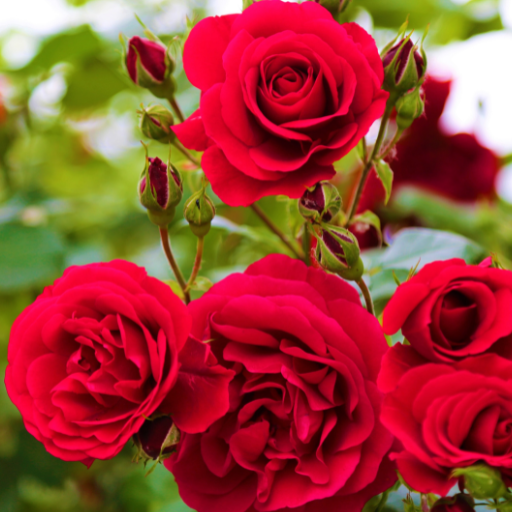
When used properly, Epsom salt can dramatically help to enhance blooming in plants by increasing flower production and overall plant health. Magnesium, which is an important component of Epsom salt, is needed for chlorophyll synthesis and photosynthesis; the two processes are crucial for growth of a plant and development of flowers. In addition, sulfur aids in the formation of essential proteins and enzymes. To apply these advantages, dissolve one tablespoon of Epsom salts into a gallon of water and either spray it on the leaves twice a week or put directly on the soil once every four to six weeks. By this application method there will be no magnesium deficiency thus supporting more bloomings.
Enhancing Blooms in Roses with Epsom Salt
Accordingly, Epsom salt can considerably improve rose bloom quality through providing magnesium as well as sulfur constituents that are necessary for healthy blooms. Magnesium ensures that chlorophyll is produced in plants thereby facilitating photosynthesis needed for vigorous growth and bright flowers while sulphur assists in synthesis of vital proteins to facilitate flowering. The best way to improve rose blooms is to prepare a solution that contains one tablespoonful of Epsom salts dissolved in each gallon of water. This solution may be used as foliar spray every two weeks or applied directly to soil after every four to six weeks. It should, however, be noted that this consistent application helps prevent nutrient deficiencies and promote healthier plants and abundant blooms.
Benefits of Epsom Salt for Petunias and Geraniums
Petunias together with geraniums derive immense benefits from the high levels of magnesium and sulphur present in Epsom salt. Magnesium plays a critical role in photosynthesis, especially during chlorophyll formation, resulting in healthy foliage and hence, increased flower production.Sulfur also assists in the development of amino acids,vitamins as well and enzymes, which are considered essential for good health as well as blossom formation within any type of plant.
To enhance petunias’ and geraniums’ flowers, one tablespoonful of Epsom salts should be added into a gallon of water. This solution can either be used as a foliar spray every fortnight or applied directly on soil once in every four to six weeks. Regular application within these periods prevents magnesium and sulfur deficiencies, providing continuous growth and profuse blooming. The concentration (1 tablespoon per gallon) and application frequency (bi-weekly as a foliar spray or every four to six weeks to soil) are the different technical parameters that must be observed when using Epsom salt to achieve desirable benefits for petunias and geraniums.
How Epsom Salt Supports Flowering Shrubs and Perennials
For example, using Epsom salt on flowering shrubs and perennial plants contributes significantly to their development, blossoming, and general well-being. Magnesium and Sulphur are fundamental components needed in various physiological processes. Chlorophyll production is facilitated by magnesium which is important for photosynthesis while sulphur helps in amino acids, proteins and enzyme synthesis.
Findings about the ideal concentration of Epsom salts in leading horticultural sources were made. One tablespoon of Epsom salt per gallon of water should be dissolved for flowering shrubs and perennials. This solution can be given as a foliar spray every two weeks or applied directly to the soil every four to six weeks. These particular timeframes and amounts are set in place to ensure that plants have a reliable supply of magnesium and sulfur, which will help prevent deficiencies.
For best results, monitor the specific needs of each plant being treated. Ensure that Epsom salts are completely dissolved before applying them because it can cause leaf burn among other adverse effects. Additionally, using this schedule consistently has been found through data from agronomic study and horticultural best practices to produce noticeable improvements in plant vigor, foliage density and bloom profusion.
Epsom Salt for Indoor and Container Plants
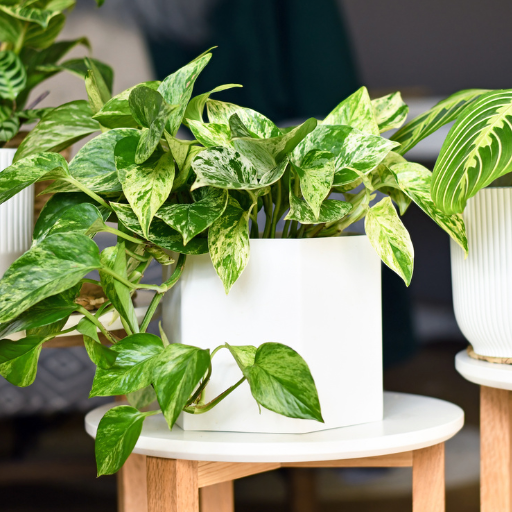
Even indoor and container plants can benefit a lot from the use of Epsom salt, just like their outdoor counterparts. Magnesium and sulfur are the key elements provided by Epsom salt to ensure healthy growth. Magnesium is crucial in the formation of chlorophyll for photosynthesis while sulfur facilitates vital amino acids, proteins and enzymes formation. Growing indoors with sufficient nutrients can improve foliage color, general growth, and stress resistance.
To use Epsom salt for indoor plants or those in containers mix one or two teaspoons per gallon of water. During the growing season, apply this solution once a month to maintain nutrient balance. Alternatively, for immediate results or addressing visible nutrient deficiencies, foliar spray could be used as well. Complete dissolution of Epsom salt in water must be ensured because undissolved salts in hard water may cause residues which might damage to plants’ health. A sound principle upon which horticultural practices are built has been that regular applications lead to vigorous growth plus more brilliant leaves as well as flowers.
Epsom Salt Advantages for Potted Herbs
There are several unique advantages associated with using Epsom salts on potted herbs. Firstly, magnesium contained therein helps absorbtion of vital plant nutrients such as nitrogen & phosphorus hence encouraging robust development together with essential oil production. In return basil, rosemary and thyme become much flavorful with better aroma within their leaves due to this effect. Secondly, sulfur in Epsom salts enhances the synthesis of amino acids/enzymes responsible for promoting good health besides protecting against diseases/pests attacks, also known as the resistance mechanism, strengthening them further. Dissolving one teaspoonful of epsom salt into one gallon water gives best results if applied after every month.Technical studies support that continuous application increases chlorophyll production and overall plant vigor, confirming empirical observations made by leading horticulturists/agronomists.
How Epsom Salt Helps Indoor Flowering Plants
Utilizing Epsom salt in the management of indoor flowering plants has precise and scientific benefits that improve vigor and quality of their blooms. Chlorophyll formation facilitated by magnesium sulfate, which is a major constituent of Epsom salt, makes it essential for photosynthesis. In the absence of natural sunlight, this becomes very crucial for indoor grown plants since they need to absorb light efficiently and convert it into energy. Magnesium also helps in absorption of other important nutrients with particular reference to phosphorus necessary for flower growth.
Technical research has shown that applying Epsom salts increases bud set and intensity of flowering. Application of Epsom salts to indoor plants like African violets, roses, and hibiscus has shown improvements in flower size and color vibrancy, among other things. In general, one tablespoonful per gallon every four or six weeks would suffice. This aligns with horticultural best practices because it maintains a continuous supply of nutrients without causing soil salinity buildup through high salt content accumulation from biological or chemical sources.
Additionally, the sulfur component in Epsom salt improves the formation of essential amino acids and proteins that build up plant immunity against pests and diseases that attack them. The technical parameters indicate it is important to ensure complete dissolution of this compound in water so as to avoid any root damage that may occur and also maximize its absorption into the roots. Consistent applications according to top horticultural sources lead to strong indoor flowering plants with prolonged blooming periods and better overall health.
Benefits of Epsom Salt for Indoor Foliage Plants
Epsom salt’s major content—magnesium and sulfur—greatly helps indoor foliage plants. Magnesium is crucial for chlorophyll production and photosynthesis, both of which enable the plants to produce their own food; therefore, they need more light, especially foliage plants that require luscious green leaves to make their structures beautiful or serve some other function. Another addition of sulfur assists in making crucial amino acids or proteins relevant for overall healthiness and resistant capacity.
To get optimal results, technical parameters recommend a dosage rate of one tablespoonful up to two tablespoons per gallon of water applied monthly. This schedule ensures an even supply of nutrients through plant roots, where they can be absorbed easily. Dissolving completely epsom salts in water becomes necessary for maximum usefulness because this helps prevent root burn while promoting uniform distribution of nutrients across all parts.
Research supported by leading horticulture authorities has ascertained that the application of Epsom salt causes an increase in leaf size, color enhancement, and general plant vigor, among others. Studies have revealed consistent use of Epsom salt enhances growth rates and makes the leaves appear greener among ferns, palms, philodendrons etc.This change is not only visible but it comes with high chlorophyll contents hence improved photosynthetic efficiency.
In summary, applying Epsom salt on indoor foliage plants brings about comprehensive benefits evident from technical parameters and best horticultural practices. This treatment ensures healthy, vigorous foliage that extends the life and beauty of indoor plants.
Application Methods for Epsom Salt
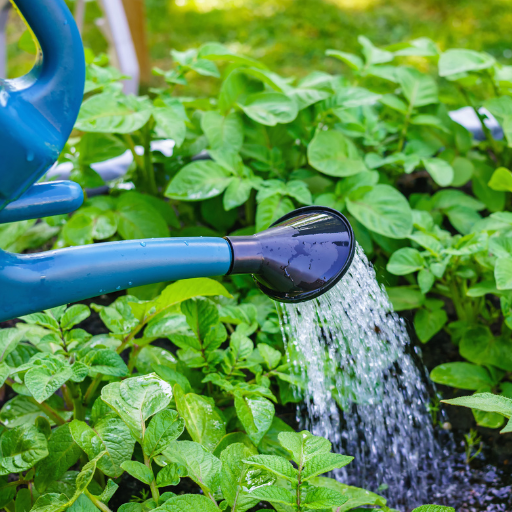
Epsom salt can be applied in many ways to boost its efficacy as a supplement for indoor foliage plants. The commonly used technique is the soil drenching method, where the recommended amount of Epsom salt is dissolved in water and poured directly onto the soil at the base of the plant. This ensures that the roots absorb the nutrients efficiently. Another approach is foliar spraying which entails mixing Epsom salt with water and spraying it on leaves. It could supply nutrients to growing plants rapidly hence significant during such times. Additionally, when planting or repotting, Epsom salt may be blended with soil to ensure uniform distribution of nutrients right from start. For foliar application, it should be done using fine mist spray so as not to cause runoff but making sure that all leaves are covered uniformly.
Best Practices for Soil Application
For more effective application of Epsom salt through soil drenching in relation to indoor foliage plants, compliance with best practice guidelines is important. First dissolve one tablespoonful of Epsom salt into one gallon of water then its ready for use. This makes certain that magnesium and sulfur are taken up optimally but no nutrient load due to overdose would take place in this concentration level. Therefore applying this solution every 4-6 weeks throughout the growing season helps maintain nutrient levels consistently.
Before applying solution containing epsome salts you must soak your ground properly first to prevent root burns from occurring. Its watering purpose should therefore aim at soaking evenly around such bases without having flooding effect being experienced at any point across an area occupied by a plant(s). In a pot, excess drainage so that root rot may not develop could only be achieved if excess water has been left out through its bottom edge open pore/holes. This will enable the plant to grow better and faster. It can also increase the aesthetic value of the surroundings.
Additionally, regular soil checks for pH and nutrient levels can help refine the delivery process, keeping magnesium levels within a recommended range of 0.2-0.5% in dry matter of the soil. This approach, supported by data, allows one to manage nutrients precisely, resulting in healthier leaves that look more vibrant.
Foliar Spray Techniques for Different Plants
Different plants require diverse foliar spray techniques to enhance their ability to effectively absorb nutrients, making it important that these differences are understood. In general, when applying Epsome salt to many different types of plants, it’s common practice to dissolve one table spoonful of epsome salt into one gallon container full of water. This gives an equal concentration that delivers magnesium and sulfur efficiently without over-application risk.
Foliar sprays may be useful during crucial growth stages in vegetable crops . Applying Epsom salt solution weekly timeously addresses any deficiencies especially with such mineral demanding crops as tomatoes or peppers whose magnesia is required more often than not . Spraying should be done at early morning or late evening hours so that less evaporation takes place while absorption gets boosted
On the other hand, ornamental plants and flowers need gentle treatment. The scorched leaves issue does not arise with spraying diluted Epsom salt solutions; 1 teaspoon per gallon of water. For maximum uptake this should be done when temperatures are cooler and damage on leaves minimized as much as possible
When new leaves are budding out on fruit trees in early spring, it is rewarding to apply sprays directly onto the foliage. An equal ratio, for example, one tablespoon per gallon, works well in vegetable crops. All parts of the leaves must be sprayed, including underneath where the stomata (pores that take in nutrients) are more.
How to Make and Use Epsom Salts Solutions
To prepare an Epsom salt solution, first measure out the recommended quantity of Epsom salts concerning your type of plant and what you intend to achieve. For instance, a general foliar spray needs just one tablespoon dissolved in every gallon of water. Mixes dissolved completely in warm water should appear uniform across all tiny containers while being applied over our leafage up to its top and bottom sides. The application should be carried out during colder periods of the day like early morning hours or late afternoon so as to minimize evaporation besides enhancing nutrient absorption. Accordingly fine-tune the concentration levels and timescale for use based on needs specific to your plants and results obtained from observations made periodically.
Frequency and Timing of Epsom Salt Application
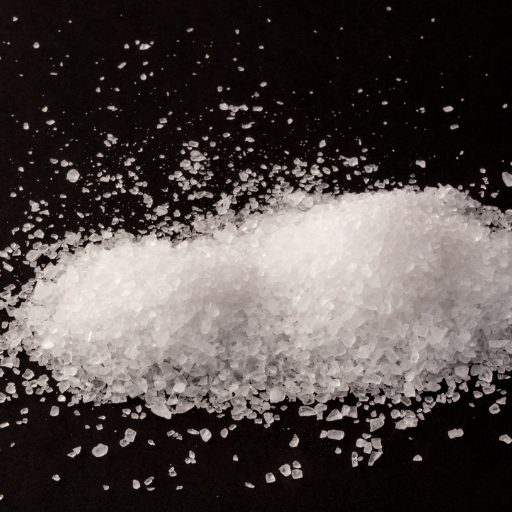
Therefore, the optimal time and frequency of Epsom salt application will depend on the specific plant type and stage of growth. For a vegetable garden, it is advisable to have bi-weekly applications during the season. Monthly treatments are also recommended for houseplants. Epsom salt should be applied to fruit trees and shrubs three times in a year that is; during blooming, fruit set and after harvesting. The best time to make an application would be early in the morning or late afternoon so that little evaporation takes place while maximum absorption happens. In making the schedule more precise about your garden’s unique needs, always consider soil tests as well as plant responses.
How often should I apply Epsom Salt?
To achieve optimum results, tailor Epsom salt application to suit different types of plants and their stages of growth. This information has been derived from horticulture authorities who propose that vegetable gardens need weekly dressing with Epsom salts throughout their development period (2-4 week intervals). However, houseplants require monthly dilute solution administration .Epsom salt is applied on fruit trees and shrubs at least thrice annually which include during blooming stage , at fruit set and post-harvesting.
- Vegetable Gardens: 1 tablespoon per gallon of water every two weeks.
- Houseplants: 1 teaspoon per 2 liters of water each month.
- Fruit Trees and Shrubs: 1 tablespoon per gallon of water three times a year (bloom, fruit set, post-harvest).
Seasonal Uses for Epsom Salt
The effectiveness and frequency of using Epsom salts can change with seasonal shifts. Springtime usage involves applying them during early growth stage for good seed germination process leading to strong root formation. During summer months when soil nutrients have been depleted, applications should be made to support production of fruits and flowers. An autumn application will also aid nutrient absorption into the plant and prepare it for a period of dormancy in winter. Adjustments should therefore be made depending on the specific climate factors in each case as high temperatures during summer or low ones during winter can affect water and nutrient absorption rates. Monitoring soil moisture levels, as well as plant health parameters can enable more accurate and efficient use of Epsom salts, throughout the year.
Plant Needs Determine Frequency
Regular checks and good knowledge about what individual plants need are key to adjusting how often magnesium sulfate is used. For example, when plants show signs of shortage in magnesium like yellowing between veins while veins remain green (chlorosis) application frequency may be intensified. On the other hand, if there is no problem with growth and health then application frequency may be reduced. Therefore, regular testing for pH value or composition of soil nutrients can help make necessary changes that will keep the soil healthy while using Epsom salt to do this. In addition the type of plants grown must also be considered; fast growing crops such as vegetables and fruiting trees require a much stable supplementation program than slow growing ornamentals and shrubs. As such adjust your timing based on different plant species requirements environmental conditions and fertility status so that optimal growth can occur.
Addressing Potential Risks and Concerns
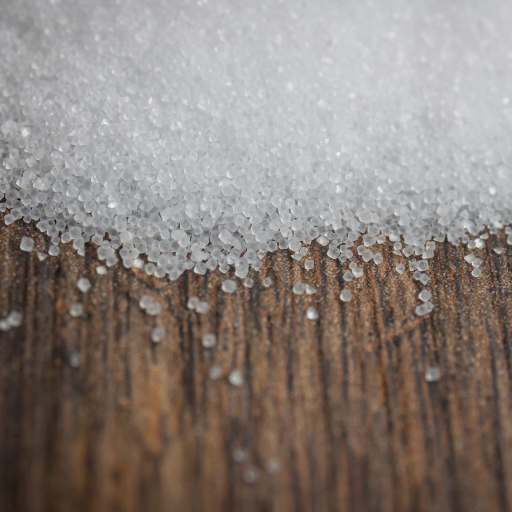
While there are potential risks and concerns associated with Epsom salt applications, they can be beneficial. Overapplication may result in excessive magnesium levels, which prevents the absorption of other important minerals such as calcium and potassium, leading to growth problems. Too much magnesium also leads to increased soil salinity that harms both plants and the microbial ecosystem within soil. In addition, inappropriate use without proper soil testing might compound existing problems rather than rectify them. It is therefore necessary for gardeners and farmers to perform regular soil tests and monitor the responses of their plants to ensure that the use of Epsom salt contributes towards making them healthier.
Can I Use Epsom Salt on All My Plants?
Do all plants tolerate Epsom salts similarly? Many plants like roses, tomatoes, and peppers – those that prefer higher magnesium levels – do well when treated, but some others fail to respond or do not respond significantly. For instance, some plants that thrive amidst rich magnesium soils will not require any supplementation, while over-application may prove destructive. Additionally, in soils balanced in macro and micronutrients, it’s unlikely that most crops would require extra Mg from Epsom salts. As such it becomes key to appreciate specific nutritional requirements per crop alongside their current state before applying Epsom salts.
Recognizing Excessive Use of Epsom Salt
Detecting excessive use includes watching plant healthiness as well as condition of the soils. The primary signs include leaf burn referred to by leaf edges turning yellowish or brownish. This problem results from too much magnesium causing osmotic imbalance and nutritional imbalances in the plant leaves (Symptoms of Over Fertilization). Suppose electrical conductivity (EC) values indicate an elevated salinity due to high applied rates (overapplication). In that case, there is a sign for this problem attained during soil testing (Symptoms of Over Fertilization). Lastly inhibited plant growth where by looking at a plant one can notice it is stunted in growth and has poor development caused by disrupted nutrient uptake. Lab soil tests will indicate if these symptoms are present through measurement of magnesium concentration, which should ideally be between 200-300 ppm for most crops. Regularly monitoring and using the recommended application rate, typically 1-2 tablespoons per gallon of water, will prevent such negative effects and maintain optimum plant health.
How to Use Epsom Salt without Compromising Safety
To safely integrate Epsom salt into your gardening routine, start with a soil test to determine the existing magnesium levels. This baseline data ensures that the soil requires supplementation. If you need to supply nutrients to your garden plants, dissolve 1-2 tablespoons of Epsom salt in a gallon of water and spray it straight on the leaves using a spray bottle for quick absorption. When adequate magnesium levels are needed for established plants, apply biweekly during the growing season (Sidenote: How to Use Epsom Salt in Your Garden). Also, adding small quantities of salt while planting new seeds or transplanting improves root formation. After application, ensure thorough watering so as to aid nutrient absorption and prevent any potential salt buildup within the soil. It is important for optimal results to monitor plant’s health regularly and adjust concentration based on how they respond.
Frequently Asked Questions (FAQs)
Q: What is the benefit of using Epsom salt for plants?
A: Epsom salt is known as magnesium sulfate, a compound that provides essential nutrients like magnesium and sulfur. These nutrients are vital for plant growth, helping to improve photosynthesis, nutrient uptake, and overall plant health.
Q: How much Epsom salt per gallon of water should be used for tomatoes?
A: For tomato plants, it is recommended to dilute one tablespoon of Epsom salt per gallon of water and apply this solution every two weeks to provide magnesium and sulfur, which are vital for their growth.
Q: Can I use Epsom salt in the garden for potted plants?
A: Yes, Epsom salt can be beneficial for potted plants. A common recommendation is to mix Epsom salt into the soil or dilute one tablespoon per gallon of water and water your potted plants with this solution every two weeks.
Q: How much Epsom salt per 100 square feet should I use in a vegetable garden?
A: For a vegetable garden, it is typically recommended to use approximately 1 cup of Epsom salt per 100 square feet of soil. You can work it into the soil before planting to improve nutrient availability.
Q: Are there specific plants that benefit more from Epsom salt?
A: Tomato plants, pepper plants, and roses are some of the plants that particularly benefit from Epsom salt. The magnesium and sulfur in Epsom salt help improve blooming, fruit setting, and overall plant health for these plants.
Q: How do I apply Epsom salt to each hole when planting seedlings?
A: When planting seedlings, you can add Epsom salt to each hole by placing a small amount, approximately one tablespoon, directly into the hole before placing the seedling. This helps provide an immediate nutrient boost.
Q: Is it safe to use Epsom salt on houseplants?
A: Yes, it is safe to use Epsom salt for houseplants, but in moderation. A common practice is to dissolve two tablespoons of Epsom salt per gallon of water and use this solution to water your houseplants once a month.
Q: How does magnesium sulfate help plants?
A: Magnesium sulfate, commonly known as Epsom salt, helps plants by improving photosynthesis, strengthening cell walls, and enhancing nutrient uptake. These benefits lead to healthier, more robust growth.
Q: How do I mix Epsom salt into soil for best results?
A: To mix Epsom salt into the soil, evenly distribute 1-2 tablespoons per square foot of soil and work it into the top layers of the soil. This ensures that the nutrients are available to the plant roots.
Q: Should I use Epsom salt as a regular fertilizer?
A: While Epsom salt can be used to provide essential nutrients, it should not replace a balanced fertilizer. It is best used in conjunction with regular fertilization to address specific nutrient deficiencies, particularly magnesium and sulfur.






